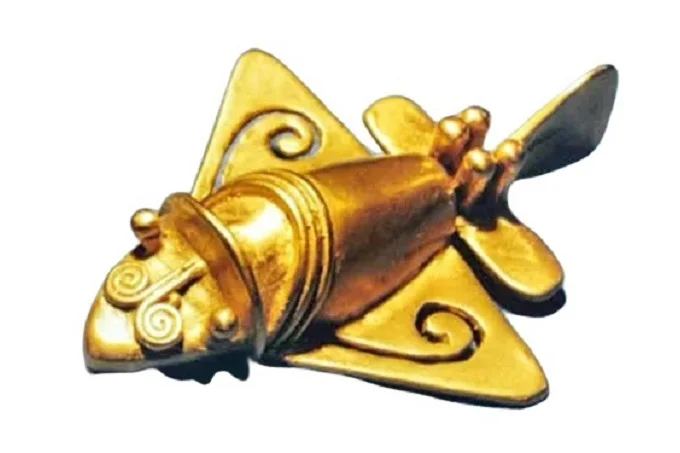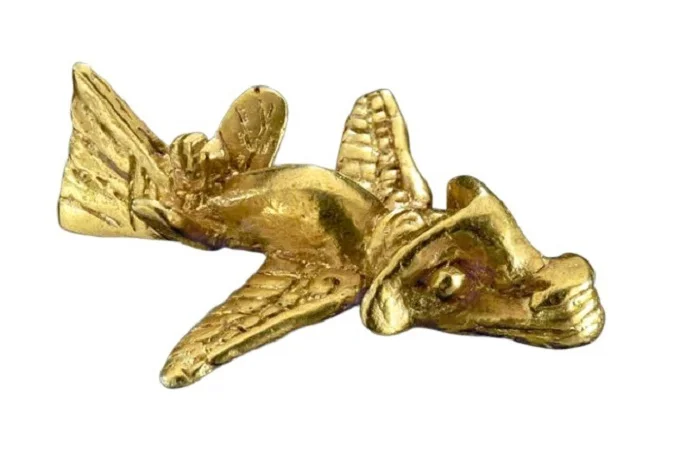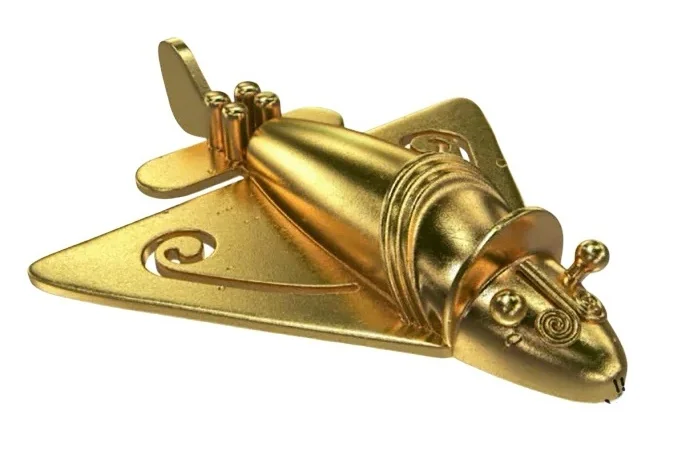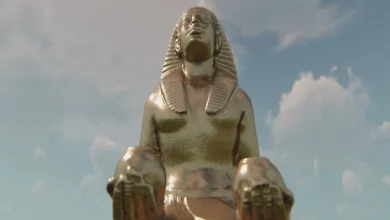“Aircraft” of the ancient Indians: something that puzzles scientists

Many treasures were left from the Indians who inhabited both Americas before Columbus. But unfortunately, the conquistadors and the Church were so diligent about traditional beliefs that by the time the various artifacts began to fall into the hands of scientists, neither they nor the Indians themselves knew their purpose. Sometimes it is not even clear what they represent. It is even worse when it is clear what they represent, but it is simply impossible to believe it.
An example of the latter would be the Golden Birds kept in the Bogota Museum. They once belonged to the Tayrona Indians. At any rate, they were found in their burials. In this connection (and also because they could not think of any other use for them) “birds” were recorded as cult objects. Truly, it is not clear what kind of cult.
The Tyrone Indians had their civilization. They were lucky – they were not exterminated because they had passed their peak of development half a thousand years before the visit of the Spaniards. The development was quite high – weaving, jewelry, gold jewelry… But nothing more. No contacts with aliens, and everything that became fashionable to attribute Atlantis, which even in Plato’s fantasy is described as a Bronze Age civilization.

But these “birds” somehow spoil this quite logical picture. They spoil it because they look like jet planes most of all. And if you look at them in profile, the resemblance is even stronger. But since the Tyrone Indians could not have had such means, most scientists decided to define it as an attribute of some kind of bird cult.
The problem was that these planes didn’t look like any native birds at all. Moreover, there was no trace of bird cults or other cults that were associated with them.
Triangular wings are a relative novelty even for Europeans since they only began to be used in the 1950s. Moreover, this applies almost exclusively to jet and mostly military air vehicles.
There is also a tail and, even more surprisingly, ailerons, which change the height of the aircraft and not only that. The tail feathering further enhances the resemblance to an airplane, since there is nothing like it in the wild.
The lack of resemblance to birds led scientists to believe they simply put forward the wrong version. Then they began to look for similarities with other animals. As a result, they concluded that there were no similarities and the “birds” were much more like a miniature representation of mechanical objects. Anyone would have mistaken them for an airplane if they had been discovered in modern Europe.
There are, however, differences from a jet plane. For example, the wings have to be moved a little farther to the nose. Even so, the models made in the image and likeness of these golden articles turned out to be quite airworthy. Not a masterpiece, but they flew tolerably well.
That is how scientists are struggling to understand what it is. If it is a symbolic representation of a bird – what kind of bird? If another animal, what kind? If it is a winged deity – where are the traces of his cult? And, again, winged deities are more often ascribed to the traits of real feathered animals rather than aerial vehicles from the future.

Maybe the ministers of the ancient cults simply saw a fragment of modern life in their visions and deified the iron birds? After all, examples of such clairvoyance, at least occasionally, but occur. So why not? At any rate, it’s much easier for me to believe this than in the aviation industry of the ancient Tyrone.




